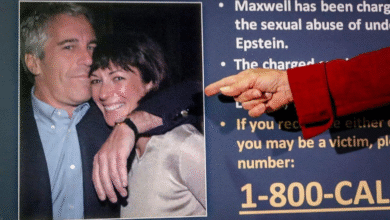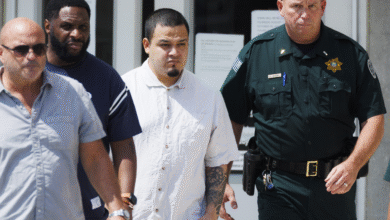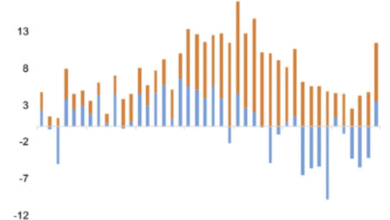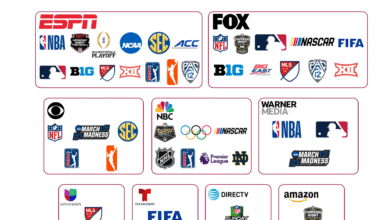Zoox Robotaxi Recall: Safety Concerns After Latest Crash
The Zoox robotaxi recall has made headlines once again as Amazon’s autonomous vehicle unit faces scrutiny following a recent crash in San Francisco. Just a month after issuing its first software recall, Zoox announced a voluntary recall affecting 270 vehicles, aimed at addressing a robotaxi software issue encountered during a low-speed turn. This incident, where an unoccupied robotaxi was struck by an electric scooter rider, has renewed concerns over the safety measures implemented by Zoox. The National Highway Traffic Safety Administration (NHTSA) is advising caution around these vehicles, given the potential risks for cyclists and scooter riders. As the autonomous vehicle landscape evolves, the effectiveness of Zoox’s safety protocols is under the spotlight, particularly in light of its ambitious vision for the future of ride-hailing.
The recent voluntary recall of Amazon’s Zoox robotaxis raises important questions about the reliability of autonomous vehicles in urban environments. In light of the recent San Francisco incident, where one of these driverless taxis was involved in a collision with an electric scooter, the need for robust software solutions becomes even more apparent. With incidents like this dictating public confidence in self-driving technology, the spotlight is on Zoox’s ability to enhance its robotaxi systems and ensure safety on the roads. As the company navigates the complexities of regulatory compliance and consumer safety, this recall serves as a crucial moment to reflect on the evolving landscape of driverless transportation and its implications for the future.
Zoox Robotaxi Recall: Understanding the Issues Behind the Software Defects
Amazon’s Zoox robotaxi unit has issued a voluntary recall of its robotaxi software for the second time in a month, raising concerns about the reliability and safety of its autonomous driving systems. This recall was prompted by a recent incident in San Francisco where a Zoox vehicle, while turning at low speed, collided with an electric scooter rider. Although the Zoox vehicle was reportedly stopped at the time of impact, the interaction between autonomous vehicles and vulnerable road users like cyclists remains a key issue for the company. The recall affects 270 vehicles, highlighting the necessity for stringent safety measures in the development of robotaxi technology.
The National Highway Traffic Safety Administration (NHTSA) is closely monitoring these recalls, as they directly relate to public safety on the roads. Zoox’s spokesperson confirmed that a formal notice was submitted to the NHTSA detailing the software defect that was causing its vehicles to mispredict other road users’ movements. This situation brings to light the need for extensive testing and validation of autonomous vehicle technologies before they are widely deployed, as the potential consequences of software errors can lead to dangerous scenarios on public roads.
The Implications of Zoox’s Recent San Francisco Crash
The recent crash involving a Zoox robotaxi in San Francisco underscores the challenges that autonomous vehicle manufacturers face as they strive for widespread adoption. The incident occurred when an unoccupied Zoox vehicle, which had been yielding at an intersection, was struck by a scooter rider. Though the rider declined medical attention, the occurrence prompted direct scrutiny of Zoox’s safety measures and software accuracy. This is not an isolated case; the company had previously issued another recall related to a crash in Las Vegas, further emphasizing the need for rigorous safety protocols in the autonomous vehicle industry.
Moreover, this situation reflects broader trends in the autonomous vehicle sector, particularly as companies like Alphabet’s Waymo push towards commercialization while others, like General Motors-backed Cruise, retract due to safety incidents. As Zoox navigates this rocky terrain, it is essential to prioritize the enhancement of its robotaxi software and establish effective training around the behaviors of its autonomous systems to prevent future collisions, especially with vulnerable road users such as pedestrians and cyclists.
Zoox’s Safety Measures in Light of Recent Recalls
In response to the recent incidents, Zoox has reiterated its commitment to implementing rigorous safety measures within its robotaxi technology. The voluntary recalls indicates the company’s proactive stance in rectifying issues before they escalate into more severe problems. The focus on enhancing the robotaxi software is critical, as ensuring accurate predictions of other vehicles and road user movements is paramount to the safety of all road users. A comprehensive software update was proposed to recalibrate the algorithms that guide the autonomous features, thereby reducing similar risks in the future.
Additionally, Zoox is likely to enhance its testing protocols and validation processes to include a wider range of interactions with different types of road users. The importance of robust simulations and real-world testing cannot be overstated, especially in urban environments like San Francisco, where pedestrian and cyclist interactions are frequent. As advances in robotaxi technology continue to evolve, integrating comprehensive safety measures that prioritize safety in the real world must remain a top priority for Zoox.
Comparative Analysis of Zoox and Other Robotaxi Services
While Zoox navigates its challenges, it is valuable to compare its current situation with other players in the autonomous vehicle space, such as Waymo and Tesla. Waymo has already established commercial services in several cities, demonstrating effective safety measures that help minimize accidents involving its autonomous vehicles. The company has often attributed its success to extensive resource investment into technology and infrastructure that prioritize the training of its systems to engage safely with various road users.
On the other hand, Tesla is set to launch its long-awaited robotaxi service in Austin, with plans to expand to major hubs thereafter. However, with Tesla’s recent controversies surrounding safety and software reliability, the industry is watching closely to see if they can avoid the pitfalls experienced by Zoox and Cruise. Each company’s approach to safety and technology integration will play a crucial role in defining the public perception of autonomous driving in the future. The comparative analysis suggests that a robust safety-first approach is essential for gaining consumer trust and paving the way for wider acceptance of robotaxi services.
Public Perception and Concerns Regarding Autonomous Vehicles
Public perception of autonomous vehicles, particularly robotaxis like those offered by Zoox, is often shaped by incidents and recalls. The recent San Francisco crash incident has raised significant concerns among potential users regarding the reliability of these automated systems. Many individuals fear for their safety when presenting themselves in close proximity to autonomous vehicles, especially in situations involving vulnerable road users like cyclists and pedestrians. This perception represents a substantial hurdle that Zoox and similar companies must overcome through transparent communication and improvements in vehicle technology.
Moreover, consumer education on the functioning of robotaxi technology is crucial. As autonomous vehicles continue to integrate into our daily lives, understanding the systems designed to handle various traffic scenarios can alleviate fears. Zoox and other companies must focus on marketing efforts that foster a better awareness of their safety measures and innovations in tracking and predicting the behavior of other road users, thereby reassuring the public of the safety and effectiveness of their autonomous vehicles.
Regulatory Oversight of Autonomous Vehicle Technologies
The regulatory landscape for autonomous vehicles in the United States is evolving, particularly in light of recent incidents involving robotaxi services like Zoox. As the NHTSA steps up its scrutiny of autonomous driving technologies, it aims to ensure that manufacturers comply with safety standards that protect both passengers and vulnerable road users. The recall of Zoox’s robotaxi software speaks to the need for comprehensive compliance monitoring and a framework that encourages continuous improvement in safety protocols across the industry.
Modeling regulations around lessons learned from past incidents can help shape future standards for the deployment of autonomous vehicles. Stakeholders, including manufacturers, government agencies, and advocacy groups, must collaborate to establish clear guidelines that prioritize public safety while fostering innovation. As autonomous vehicles traverse public roads, the importance of regulatory oversight and accountability cannot be understated, ensuring that technologies remain safe and effective in real-world applications.
The Future of Autonomous Ride-Hailing Services
As Zoox continues to refine its robotaxi software in the wake of its recalls, the future of autonomous ride-hailing services hangs in the balance. The advances made by competitors like Waymo demonstrate a clear path forward, but the road for Zoox will depend heavily on how effectively the company addresses its current shortcomings. With ongoing testing and updates, Zoox has the potential to emerge as a significant player in the autonomous vehicle industry, especially in urban environments where ride-hailing services are in high demand.
Looking ahead, the expansion of robotaxi services in cities across the U.S. hinges on technological advancements that ensure safety, reliability, and public confidence. Zoox must embrace a culture of continuous improvement, built on strong feedback loops from real-world data and user experiences, to navigate the complexities of urban mobility. As public acceptance and regulatory frameworks evolve, Zoox’s ability to innovate within a safety-focused model will be paramount to the success of its autonomous ride-hailing vision.
Safety Challenges Facing the Autonomous Vehicle Industry
The recent incidents surrounding Zoox’s robotaxis highlight a broader challenge facing the entire autonomous vehicle industry: maintaining safety in a rapidly growing technological landscape. As more manufacturers enter the space and aim to capture market share, ensuring consistent safety standards becomes increasingly crucial. With recalls being a frequent occurrence, it signals that the industry must prioritize the resolution of software issues that can lead to unpredictable interactions with road users, particularly vulnerable individuals.
Additionally, the challenge lies not just in software reliability but also in public perception of safety. Incidents like the San Francisco crash involving a Zoox vehicle may result in hesitance from consumers who question the reliability of autonomous transportation. Therefore, addressing safety challenges requires a comprehensive approach that encompasses technology development, regulatory compliance, and effective public engagement strategies to foster trust in the burgeoning world of autonomous vehicle services.
Technological Innovations Behind Zoox and Autonomous Vehicles
At the heart of Zoox’s operations is a commitment to technological innovation that fuels its autonomous vehicle systems. The combination of advanced sensors, artificial intelligence, and machine learning algorithms is designed to ensure that the vehicles can navigate complex urban landscapes safely and efficiently. Continuous investment in R&D is essential to enhance the robotaxis’ decision-making abilities in real-time, accounting for the unpredictable nature of human behavior on the road.
These technological advancements are not limited to Zoox alone; the autonomous vehicle industry is witnessing breakthroughs across the board, with companies vying to create the most reliable and safe technologies. As the competition heats up, collaboration among manufacturers, tech developers, and regulatory agencies can lead to innovations that raise the bar for safety standards, ultimately benefiting all road users. Zoox must leverage its position to push the boundaries of technology while ensuring that safety remains the utmost priority.
Frequently Asked Questions
What prompted the recent Zoox robotaxi recall?
The latest Zoox robotaxi recall was prompted by a software issue following a crash in San Francisco on May 8, where an unoccupied robotaxi was involved in a minor collision with an electric scooter rider. The incident raised concerns about the robotaxi’s ability to accurately predict and respond to the movement of surrounding vehicles.
How many Zoox robotaxis are affected by the recall?
The Zoox robotaxi recall affects 270 vehicles, which were found to have a defect in the automated driving system that could lead to inaccurate predictions of other road users’ movements.
What are the safety measures taken by Zoox following the recall?
Following the Zoox robotaxi recall, the company is enhancing its safety measures to improve its software and reduce the risk of future incidents. This includes refining the autonomous vehicle’s predictive capabilities regarding cyclist and scooter movements to ensure safer interactions.
What were the circumstances of the San Francisco crash involving a Zoox robotaxi?
The San Francisco crash involved a Zoox robotaxi that was stopped and then moved after completing a turn, resulting in contact with an electric scooter rider on May 8. Fortunately, the scooter rider sustained only minor injuries and declined medical attention.
What is the significance of the voluntary recall submitted to the NHTSA?
The voluntary recall submitted to the National Highway Traffic Safety Administration (NHTSA) indicates Zoox’s commitment to safety and transparency in the development of its autonomous vehicle technology. The NHTSA’s acknowledgment of the recall emphasizes the need for caution around robotaxis while they improve their systems.
Has this recall happened before for Zoox robotaxis?
Yes, this is the second voluntary recall of Zoox robotaxi software in a month, following a prior incident in Las Vegas where an unoccupied robotaxi collided with a passenger vehicle. Both incidents highlighted the need for improvements in Zoox’s automated driving software.
What are the implications of the Zoox robotaxi recall for the autonomous vehicle industry?
The Zoox robotaxi recall highlights ongoing challenges in the autonomous vehicle industry regarding safety and reliability. It underscores the importance of robust software testing and adaptation following incidents to prevent accidents and ensure user trust in robotaxi services.
How does Zoox’s situation compare to other companies in the robotaxi industry?
Zoox’s recall is reminiscent of challenges faced by other companies in the autonomous vehicle space, such as Cruise, which exited the robotaxi business after a serious incident. It emphasizes the broader industry scrutiny of safety protocols and technological reliability among autonomous vehicle manufacturers.
What does the recent Zoox robotaxi recall mean for customers and riders?
For customers and potential riders, the Zoox robotaxi recall means increased awareness and attention to safety improvements being implemented. It highlights the importance of monitoring autonomous vehicle operations and understanding the measures being taken to ensure safe travel.
What future plans does Zoox have after the recall?
Following the Zoox robotaxi recall, the company aims to enhance its robotic software and continue its development and testing phases on public roads in the U.S. Zoox’s long-term goal remains to realize its vision for autonomous ride-hailing, despite the challenges faced.
| Key Point | Details |
|---|---|
| Voluntary Recall | Zoox issued its second voluntary software recall within a month following a crash. |
| Recent Incident | An unoccupied Zoox robotaxi was struck by an electric scooter in San Francisco on May 8. |
| Injuries | The scooter rider suffered minor injuries but declined medical attention. |
| NHTSA Notification | Zoox submitted the recall report to the National Highway Traffic Safety Administration. |
| Number of Affected Vehicles | 270 Zoox vehicles are affected by the recall. |
| Safety Advisory | NHTSA advised road users to be cautious around autonomous vehicles. |
| Previous Incidents | Zoox had another recall two weeks prior related to a crash in Las Vegas. |
| Competition in AV Industry | Other companies like Waymo and Tesla are advancing in autonomous vehicle technology. |
| Future Plans | Zoox is in testing phases while competitors are launching commercial services. |
Summary
The Zoox robotaxi recall highlights the challenges faced by autonomous vehicle technology, especially following incidents that raise safety concerns. This recent recall, prompted by a crash involving an electric scooter rider, emphasizes the importance of software reliability and the need for continued development in the autonomous driving sector as Zoox aims to improve its systems amidst increasing competition.




